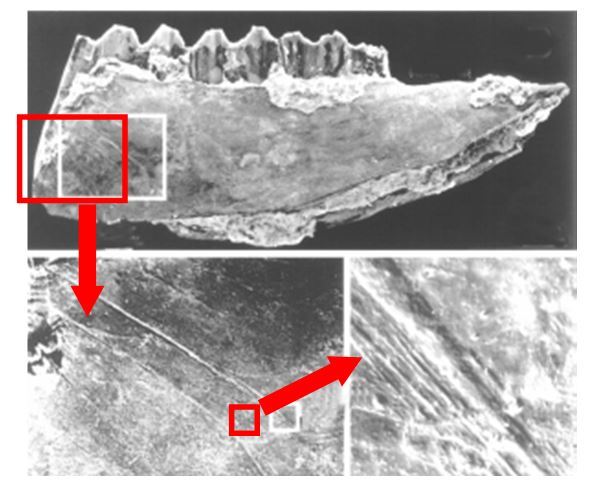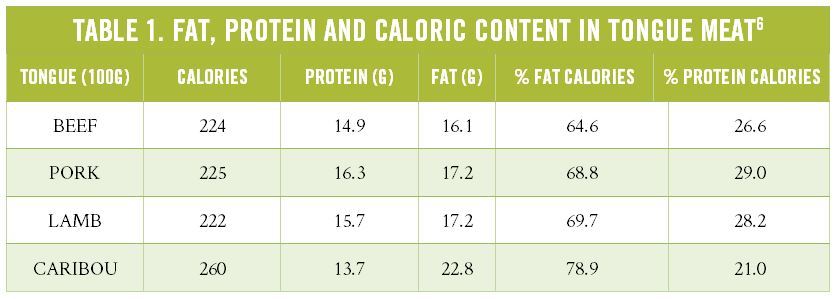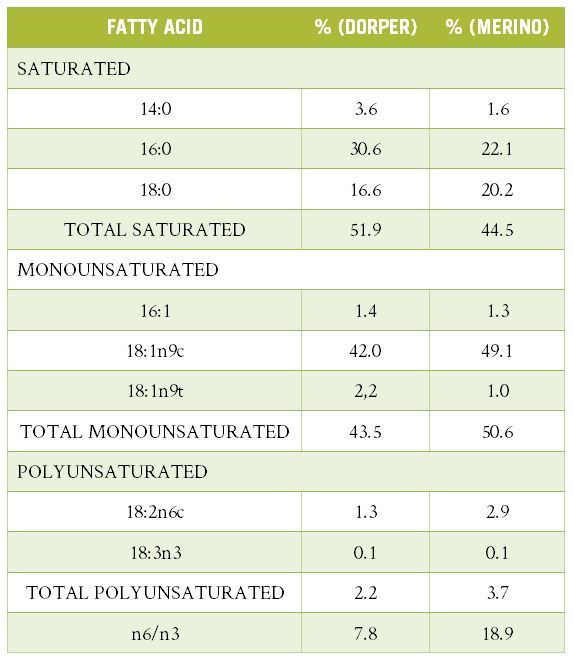Is Beef Tongue Bad for You
Back in the summer of 1969 as a strapping, young Forest Service firefighter based out of Markleeville California, I had the pleasure to dine in the world famous Basque establishment, The Overland Hotel, Bar and Restaurant, located in Gardnerville, Nevada. Unfortunately I discovered the Overland has just recently closed its doors. Nevertheless, my memories of a singular summertime dinner with my firefighting buddies at the Overland linger to this day.
For those of you who have never visited a western Basque restaurant, you are in for a surprise. Meals are generally served family-style, where patrons sit at communal tables and are collectively provided unlimited amounts of food and drink – the only caveat being that your dining selection is limited just to the items the hosts have prepared for dinner. OK – way different from the normal U.S. restaurant, but as you may well surmise, this ambiance creates a festive dining experience promoting conversation and good times for all – particularly when the first carafe of excellent Spanish, red wine is served up in boundless quantities for everyone at your table.
From my memory of that long ago dinner, a simple salad of lettuce, cucumbers and tomatoes dressed with vinegar and olive oil came first, followed by an incredibly delicious dish which I had never experienced in my entire life – beef tongue. My Basque hosts enjoyed this delicacy throughout their lives as had their ancestors before them. However, as a naïve American teenager raised upon the typical junk food fare of the 1950's and 1960's, I had no idea of the delicacy I would soon be enjoying. Only decades later would I finally appreciate that tongue was a highly nutritious organ meat that had been savored by humans from our very origins.
Archaeological Evidence
The top photograph shown below is from the inside surface of a fossilized mandible (jawbone) of either a wildebeest or a hartebeest. This artifact was found in East Africa and has been dated to 2.5 million years ago1 – a time slightly before the human genus (Homo) first arose. In the photograph you can make out a slight scratch on the inside surface of the jawbone. This scratch has been magnified and then magnified again in great detail with a scanning electron microscope.1 The scratch is actually a cut mark made by one of our ancient hominid ancestors who used a sharp stone flake to remove the tongue.1 This remarkable archaeological discovery represents convincing evidence that tongue was a favored organ meat from the very beginnings of humankind.
The archaeological record for virtually all stone age hominids and historically studied hunter gatherers demonstrates that tongue removal and consumption in prey mammals was a nearly universal practice.2-4 Similarly, modern humans living in 19th century America seemed to also have a great fondness for tongue. In just four short decades, American buffalo hunters slaughtered bison almost to the point of extinction, reducing their numbers from an estimated 30 million to less than 1,000 animals.5 Drury and Clavin write, "When whites killed the buffalo, the animals were skinned where they fell, everything but their hides and tongues left to rot on the prairie The hunters considered the meat worthless . . ." 5

Figure 1. Scanning electron microscopy of a stone cut mark on the medial surface of an Alcelaphine bovid (wildebeest/Hartebeest) mandible made during tongue removal (reference 1).
So, just what was it about the tongues of prey mammals that made this organ so desirable to our hunter gatherer ancestors, even 2.5 million years ago? Why was tongue consumed raw, first and foremost after a successful kill? And why too did 19th century American buffalo hunters abandon the entire edible bison carcass except to eat the tongue? These are good questions raised by archaeological and historical evidence. However, these questions could have only been answered in the past 50 years or so with the development of modern analytical instruments capable of measuring the nutrient composition of tongue. As you will soon learn, tongue nutrient content has been infrequently analyzed.
Nutritional Analysis of Tongue
In the United States tongue is rarely or never consumed except as in ethnic dishes, such as the Basque dinner I enjoyed at the Overland. It should be mentioned that most of us in the western world are simply missing out upon this delicious organ meat. My first taste of tongue came that summer evening at the Overland in a brilliant tomato and green pepper sauce recipe stewed slowly to perfection. The tough outer surface of the tongue had been sliced away, so there was no inkling that the soft, tasty tongue I was eating was anything other than a great cut of tender, flavorful meat.
OK. Back to the nutritional basics. Why is tongue so desired in non-westernized populations and why is it and so flavorful? First and foremost, it is a high fat cut of meat, but moreover, it contains the types of fatty acids which we deem to be flavorful and which have proven therapeutic health effects. In the table below, I have characterized the fat, protein and caloric content in a 100 gram portion (~1/4 pound) of beef, pork, lamb and caribou tongue.

These numbers at first glance may not seem to be extraordinary or remarkable to anyone other than a nutritional scientist, knowledgeable in wild game nutrient composition. Let me explain. Tongue is an incredibly concentrated source of fat on a caloric basis. In wild mammals, muscle meat typically contains only 20-22% of its calories as fat with the balance as protein.7, 8 Contrast this percentage to the fat calories (65-80%) found in tongue, and you will "get why" our ancestors preferentially ate tongue at every available opportunity.
Protein is physiologically toxic at levels beyond about 35-40% of calories,7-9 whereas fat can be consumed in unlimited quantities. Hence, the foraging strategy of our hunter gatherer ancestors was always to maximize fat intake (ergo fatty organs and meat: tongue, marrow, brains, perinephral fat, mesenteric fat, retro-orbital fat, lips, liver, etc.) while restricting protein intake (lean muscle meat) to our physiological ceiling.7-9
To put it simply, tongue is one of the highest fat organs in mammals, and our hunter gatherer ancestors realized that tongue prevented symptoms of protein poisoning, was more satiating than muscle meat and simply made them feel good. If you can get over the western stigma of eating "tongue," you will taste one of the ancient delicacies of humankind. Why does properly cooked tongue taste so delicious? Let me enlighten you with the very first study ever of tongue fatty acid composition.10
Until 2013, the fatty acid composition of tongue had never been reported in the available scientific literature. Thanks to Dr. Hoffman from the University of Stellenbosch in South Africa we now have preliminary data showing that tongue contains a healthy fatty acid profile, but also is known to be flavorful to human taste preferences. Below is a table depicting the fatty acid profile of tongue in two breeds (Dorper and Merino) of sheep.

Notice that tongue contains very high concentrations of monounsaturated fatty acids, particularly oleic acid (18:1n9c). Oleic acid is the same health promoting fatty acid found in nuts and olive oil. Our research group has demonstrated that oleic acid is also found in high concentrations in bone marrow.11 Finally take a look at the relatively high concentrations of 18:0 present in tongue. This saturated fatty acid is called stearic acid and is one of the few saturated fatty acids which lowers blood cholesterol levels.
Besides its healthful fatty acid profile, tongue has a delicious flavor found in few other animal tissues. Animal foods containing high amounts of oleic acid are savory because these fats maintain a smooth, rich texture compared to shorter chain saturated fatty acids such as palmitic acid (16:0) which is a storage fat. Pemmican made with marrow (also high in oleic acid) was preferred by North American Indians compared to pemmican made with storage fat (palmitic acid). So, do yourself a favor give beef tongue a try. Here's a recipe from our kitchen that you may enjoy.
Apricot Raisin Tongue
Serves 4
Instructions
- 1 beef tongue
- 1 tbsp garlic powder
- 3 bay leaves
- 1 tablespoon marjoram
- 1 lb dried apricots (nonsulfured; available at health food stores)
- 1 lb tomatoes, peeled
- 1/2 cup lime juice
- 1/2 cup lemon juice
- 1/4 tsp basil
- 1/4 tsp ground red pepper
- 1 tbsp mustard powder
- 1/2 cup raisins
Directions
- Put the tongue in a large pot, cover completely with water, and bring to a rapid boil.
- Replace the water and bring to a second boil.
- Replace the water again and bring to a slow, easy boil.
- Add the garlic powder, bay leaves, and marjoram, and cook until done, about 2 hours.
- Discard the water and bay leaves. Skin the tongue and let it cool. Cut into thin slices.
- Preheat the oven to 350°F.
- Place the apricots in a saucepan.
- Puree the tomatoes in a blender and add the tomato sauce and the remaining ingredients to the apricots, and bring to a boil. Continue to simmer until the mixture thickens.
- Layer the sliced tongue in a flat casserole dish and pour the sauce over it.
- Bake for about 20 minutes.
Cordially,
Loren Cordain, Ph.D., Professor Emeritus
References
1. de Heinzelin J1, Clark JD, White T, Hart W, Renne P, WoldeGabriel G, Beyene Y, Vrba E. Environment and behavior of 2.5-million-year-old Bouri hominids. Science. 1999 Apr 23;284(5414):625-9.
2. Wheat JB. A Paleo Indian bison kill. Scientific American. 1967; 216:109-117.
3. Todd, LC., Rapson, DJ. "Formational analysis of bison bonebeds and interpretation of Paleoindian subsistence." Le Bison: Gibier et Moyen de Subsistance des Hommes du Paléolithique aux Paléoindiens des Grandes Plaines. Éditions APDCA, Antibes (1999): 479-499.
4. White TE. Observations on the butchering techniques of some aboriginal peoples number 2. American Antiquity 1953;19:160-164.
5. Drury B, Clavin T. The Heart of Everything that Is. Simon and Schuster, New York, 2013, pp 183-184.
6. Nutritionist Pro. Version 4.7.0. Axxya Systems, //www.nutritionistpro.com/, 2014.
7. Cordain L, Brand Miller J, Eaton SB, Mann N, Holt SHA, Speth JD. Plant to animal subsistence ratios and macronutrient energy estimations in world wide hunter-gatherer diets. American Journal of Clinical Nutrition, 2000, 71:682-92.
8. Remko S. Kuipers1, Martine F. Luxwolda1, D.A. Janneke Dijck-Brouwer1, S. Boyd Eaton, Michael A. Crawford, Cordain L, and Frits A.J. Muskiet. Estimated macronutrient and fatty acid intakes from an East African Paleolithic diet. Brit J Nutr , 2010 Dec;104(11):1666-87.
9. Rudman D, DiFulco TJ, Galambos JT, Smith RB, Salam AA, Warren WD. Maximal rates of excretion and synthesis of urea in normal and cirrhotic subjects. J Clin Invest 1973;52:2241-49.
10. Hoffman LC, Laubscher LL, Leisegang K.Nutritional value of cooked offal derived from free-range rams reared in South Africa. Meat Sci. 2013 Mar;93(3):696-702
11. Cordain L, Watkins BA, Florant GL, Kehler M, Rogers L, Li Y. Fatty acid analysis of wild ruminant tissues: Evolutionary implications for reducing diet-related chronic disease. Eur J Clin Nutr, 2002;56:181-191.[/full_width]
Source: https://thepaleodiet.com/tongue-hunter-gatherer-delicacy
0 Response to "Is Beef Tongue Bad for You"
Post a Comment